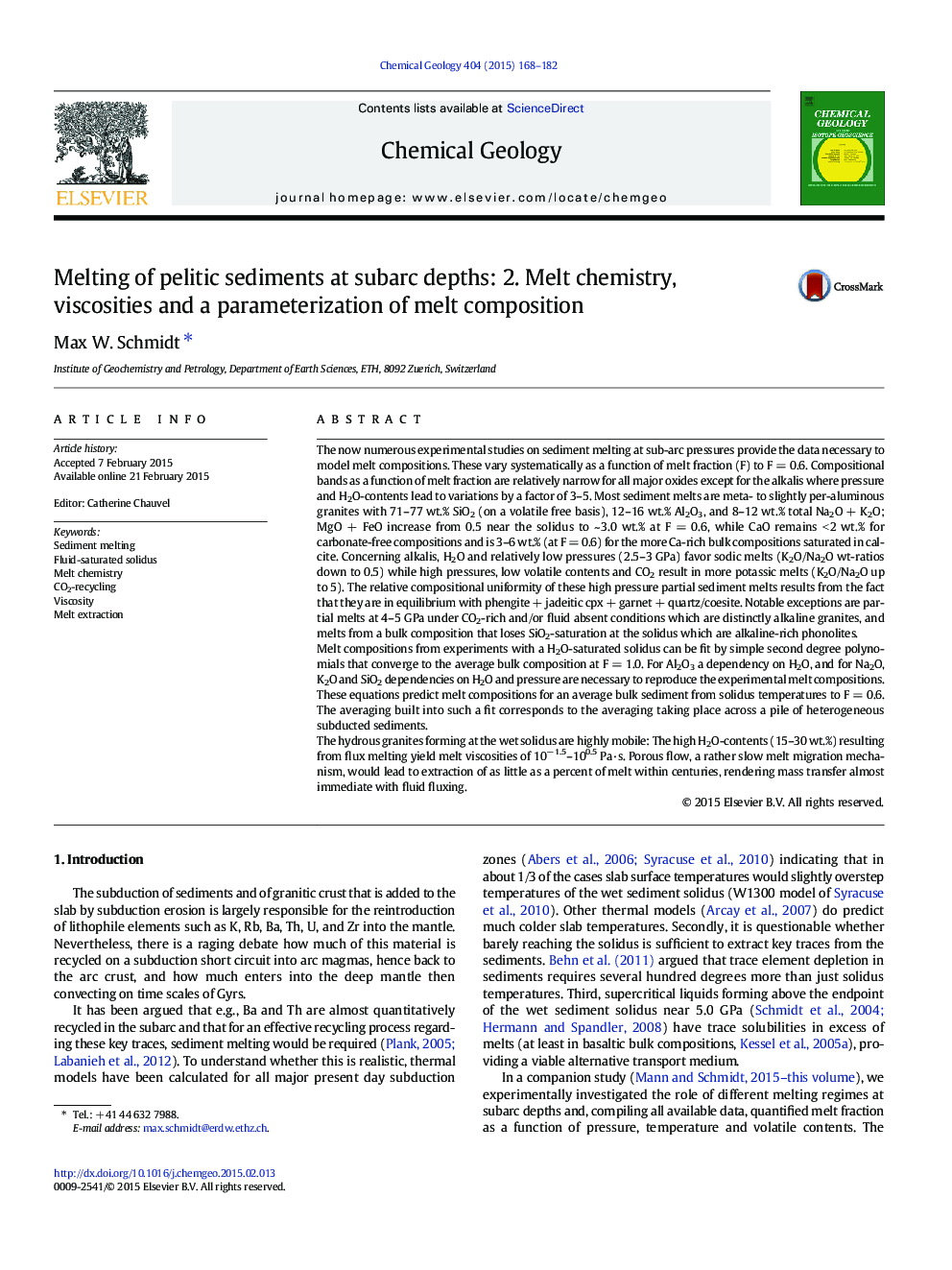| کد مقاله | کد نشریه | سال انتشار | مقاله انگلیسی | نسخه تمام متن |
|---|---|---|---|---|
| 4698516 | 1637569 | 2015 | 15 صفحه PDF | دانلود رایگان |
• Compilation of all available experimental melt compositions of sediments at subarc depths
• Parametrization of melt composition as a function of melt fraction (F), pressure and H2O-content
• Viscosities of calculated subarc sediment melts suggest instantaneous migration of these granites.
The now numerous experimental studies on sediment melting at sub-arc pressures provide the data necessary to model melt compositions. These vary systematically as a function of melt fraction (F) to F = 0.6. Compositional bands as a function of melt fraction are relatively narrow for all major oxides except for the alkalis where pressure and H2O-contents lead to variations by a factor of 3–5. Most sediment melts are meta- to slightly per-aluminous granites with 71–77 wt.% SiO2 (on a volatile free basis), 12–16 wt.% Al2O3, and 8–12 wt.% total Na2O + K2O; MgO + FeO increase from 0.5 near the solidus to ~ 3.0 wt.% at F = 0.6, while CaO remains < 2 wt.% for carbonate-free compositions and is 3–6 wt.% (at F = 0.6) for the more Ca-rich bulk compositions saturated in calcite. Concerning alkalis, H2O and relatively low pressures (2.5–3 GPa) favor sodic melts (K2O/Na2O wt-ratios down to 0.5) while high pressures, low volatile contents and CO2 result in more potassic melts (K2O/Na2O up to 5). The relative compositional uniformity of these high pressure partial sediment melts results from the fact that they are in equilibrium with phengite + jadeitic cpx + garnet + quartz/coesite. Notable exceptions are partial melts at 4–5 GPa under CO2-rich and/or fluid absent conditions which are distinctly alkaline granites, and melts from a bulk composition that loses SiO2-saturation at the solidus which are alkaline-rich phonolites.Melt compositions from experiments with a H2O-saturated solidus can be fit by simple second degree polynomials that converge to the average bulk composition at F = 1.0. For Al2O3 a dependency on H2O, and for Na2O, K2O and SiO2 dependencies on H2O and pressure are necessary to reproduce the experimental melt compositions. These equations predict melt compositions for an average bulk sediment from solidus temperatures to F = 0.6. The averaging built into such a fit corresponds to the averaging taking place across a pile of heterogeneous subducted sediments.The hydrous granites forming at the wet solidus are highly mobile: The high H2O-contents (15–30 wt.%) resulting from flux melting yield melt viscosities of 10− 1.5–100.5 Pa·s. Porous flow, a rather slow melt migration mechanism, would lead to extraction of as little as a percent of melt within centuries, rendering mass transfer almost immediate with fluid fluxing.
Journal: Chemical Geology - Volume 404, 26 May 2015, Pages 168–182
